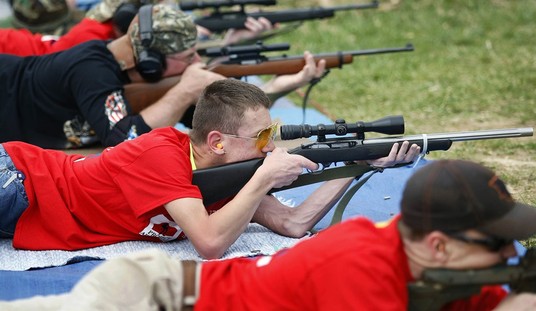Anti-gun groups and activists cry all the time about how Congress hasn’t passed gun control. They can’t accept any solution to violence, crime, or anything else it seems that doesn’t start and end with gun control. It’s their whole reason for existing, apparently. Well, not their only one, but anyway…
Over the past handful of years, there have been no real gun control measures passed at the federal level. Despite that, even The Trace has to admit something they’d rather not. Gun-related fatalities, not counting suicides, are down.
At least 14,611 Americans were killed by guns last year, excluding most suicides, according to data collected by Gun Violence Archive, a nonprofit that tracks shootings through media and law enforcement reports. That’s a nearly 7 percent drop compared to last year, and the first decline recorded by GVA in its five-year history.
GVA records and publishes data on gun incidents in real time, and this figure represents one of the earliest estimates of gun violence in 2018. The Centers for Disease Control and Prevention, which tracks firearms mortality, typically takes almost a year to release data on gun deaths. Since 2014, when GVA launched, its tallies of firearm deaths have been within 5 percent of the CDC’s.
The GVA data is not without caveats, however: Because of the nonprofit’s reliance on police and media reports, its final estimate may change as more detail becomes available. The data also excludes most suicides, which account for the majority of annual gun deaths — and which are rising. Last month, the CDC reported that 39,773 people in the United States died from gunshot wounds in 2017, the most single-year gun deaths in half a century. The increase was driven by suicides.
GVA recorded 28,159 firearm injuries in 2018, a 10 percent decrease over 2017. Unlike its gun death counts, GVA’s tallies of nonfatal shootings are significantly lower than estimates produced by the CDC. GVA director Mark Bryant said the discrepancy can be chalked up to issues with the CDC’s methodology, which The Trace has reported on previously.
In other words, despite no federal gun control laws, fewer people died due to gunshots except for suicides. Now, suicides can be a problem and one that should be addressed, but it’s a mental health issue more than anything else. Address the underlying depression and people not only don’t kill themselves, but they also tend to live better lives in the long run.
While The Trace appears to do its best to make this year out to be some kind of anomaly, it’s not.
As Pew Research noted earlier this year, there’s been a downward trend for violent crime for a while now.
The two most commonly cited sources of crime statistics in the U.S. both show a substantial decline in the violent crime rate since it peaked in the early 1990s. One is an annual report by the FBI of serious crimes reported to police in approximately 18,000 jurisdictions around the country. The other is an annual survey of more than 90,000 households conducted by the Bureau of Justice Statistics, which asks Americans ages 12 and older whether they were victims of crime, regardless of whether they reported those crimes to the police.
Using the FBI numbers, the violent crime rate fell 49% between 1993 and 2017. Using the BJS data, the rate fell 74% during that span. (For both studies, 2017 is the most recent full year of data.) The long-term decline in violent crime hasn’t been uninterrupted, though. The FBI, for instance, reported increases in the violent crime rate between 2004 and 2006 and again between 2014 and 2016.
Which is why we say it’s trending downward. Upward ticks are going to happen from time to time, but those ticks are temporary spikes, by and large.
What The Trace has done is shown everyone that we don’t need gun control to reduce violence.
Yet why is there still a push for gun control? That’s easy. It’s perception.
As something becomes less common, it becomes reported more. It’s now something a little rare, so media outlets can devote more resources to cover it. This can create a perception that crime is worse when, in reality, it’s better than it has been in a long time.
Couple that with mass shootings and the hysteria brews exponentially until you get people freaking out over something that’s not nearly the problem they make it out to be.
If violent crime is trending downward with no new gun control laws on the books, then clearly something else is at work here. It would behoove lawmakers and experts to figure out why that’s the case and then work to expand on those factors to continue driving violent crime downward.
Do that and leave our guns the hell alone.








Join the conversation as a VIP Member